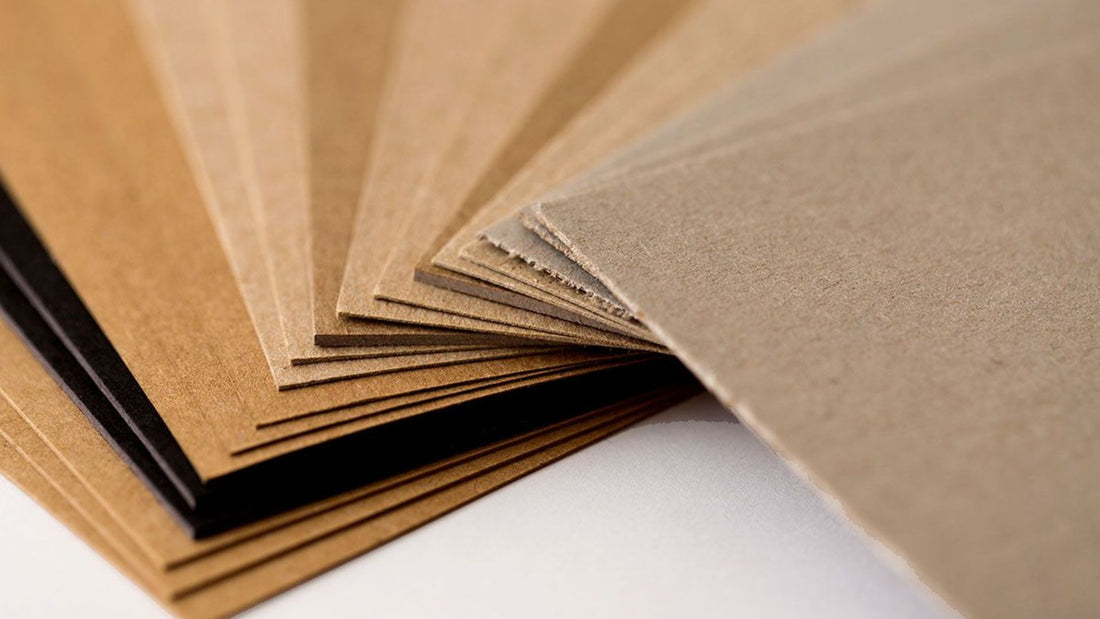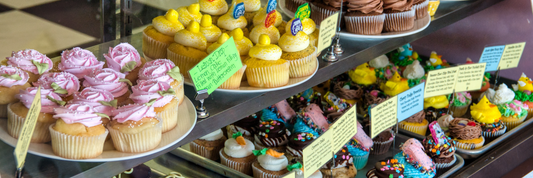Selecting the paper packaging for your food business is crucial. Paperboard emerges as a versatile and sustainable option. This article clarifies what paperboard is, how it differs from cardboard, and explores popular grades and types. Finally, we'll guide you in choosing the ideal paperboard for your food products.
- Why Is Food Packaging with Paper so Popular?
- Paper Biodegradable and its environmental benefits for Food Packaging
-
Eco-friendly paper and its application for food and beverage packaging
What Is Paperboard?
Paperboard is essentially a thicker, sturdier version of paper. Unlike paper, which is typically less than 0.30 millimeters (or 12 points) thick, paperboard boasts a thicker profile, offering greater rigidity and strength. While the exact dividing line between paper and paperboard can be blurry, paperboard's increased thickness translates to several advantages for packaging, especially in the food industry.
Here's a closer look at some key characteristics of paperboard:
- Thicker and stronger: Compared to paper, paperboard provides superior strength and stability, making it ideal for protecting food items during storage and transportation.
- Versatility: Paperboard can be single or multi-layered, and it can be cut, folded, and shaped into various packaging forms, catering to diverse food product needs.
- Lightweight: Despite its increased thickness, paperboard remains lightweight, contributing to efficient storage and transportation for both businesses and consumers.
- Sustainability: Paperboard can be crafted from recycled materials or virgin wood pulp, making it an eco-friendly packaging option.
In the next section, we'll delve deeper into how paperboard stands out from cardboard.

4 Popular Types of Paperboard
In the world of paperboard, different grades exist to cater to specific needs. Understanding these grades will empower you to choose the ideal material for your food packaging. Here's a breakdown of some popular paperboard grades:
Solid Bleached Sulfate (SBS)
This premium grade boasts a bright white, clay-coated surface perfect for high-quality printing. Made with bleached virgin wood pulp, SBS offers a smooth and luxurious feel, often used for packaging high-end food products like chocolates or cosmetics.

Coated Unbleached Kraft (CUK)
This grade features a natural kraft (light brown) color with a clay-coated surface suitable for printing. Made from recycled or virgin kraft pulp, CUK offers good strength and is a popular choice for beverage cartons (like juice boxes) and sturdy retail packaging for items like laundry detergent.

Clay-Coated News Back (CCNB)
This budget-friendly option utilizes recycled paper pulp with a clay coating on one side. While the backside remains uncoated (often brown), CCNB provides a printable surface for cost-conscious packaging solutions. It's commonly used for cereal boxes or frozen food packaging.

Folding Boxboard (FBB)
This broad category encompasses various paperboard grades specifically designed for folding cartons. FBB can be single or multi-layered, with options for different thicknesses, coatings, and finishes. It caters to a wide range of food packaging needs, from bakery boxes to frozen food containers.

By understanding these popular grades and their characteristics, you'll be well-equipped to choose the paperboard that best suits your food product's needs in terms of printability, strength, and cost-effectiveness.
What's the Difference Between Paperboard vs Cardboard?
Paperboard and cardboard might seem interchangeable. However, there are key distinctions between these two materials, particularly in their construction and suitability for different packaging applications. Below are their differences by key factors.
|
Paperboard |
Cardboard |
|
|
Structure |
Typically consists of a single layer of thick paper pulp, although some varieties may have multiple plies laminated together. |
Features a fluted or wavy inner layer sandwiched between two flat linerboard sheets. This creates a stronger, more rigid structure compared to paperboard. |
|
Strength and Rigidity |
Offer moderate strength and rigidity, suitable for lightweight to medium-weight food items like cereal boxes or bakery containers. |
Provide superior strength and can withstand heavier loads, making it ideal for shipping boxes or packaging for bulky food products. |
|
Flexibility |
Generally more flexible than cardboard due to its single-layer construction. This allows for easier folding and shaping into various packaging designs. |
Less flexible due to its fluted inner layer. While it can be scored and folded to some extent, its primary focus is on sturdiness. |
|
Applications |
Often used for cereal boxes, folding cartons for bakery goods, and food trays due to its printability and ability to be formed into specific shapes |
Primarily used for shipping boxes, heavy-duty packaging for appliances or furniture, and larger food items that require significant protection during transport. |
|
Cost |
Generally less expensive than cardboard due to its simpler construction. |
Slightly more expensive due to the additional layer and overall sturdiness. |
Overall, paperboard offers a good balance between printability, flexibility, and moderate strength, making it suitable for a variety of food packaging needs. Cardboard prioritizes superior strength and rigidity for heavy-duty applications.
However, when looking closer to paperboard, there are different grades. Now in the market, there are 4 popular paperboard grades. We will dicuss more about these 4 types of paperboard in the next section.
Choosing Right Type of Paperboard for Your Food Business
Now that you understand the strengths and applications of paperboard, here's a guide to selecting the perfect type for your food business:
Consider Your Product:
- Weight and Size: Heavier or bulkier food items might require a sturdier paperboard with multiple plies for optimal protection.
- Fragility: Delicate foods like pastries may benefit from paperboard with good cushioning properties to prevent damage during transport.
- Moisture Content: For products with high moisture content, choose a paperboard with a moisture barrier to prevent sogginess or spoilage.
Functionality and Aesthetics:
- Printability: If high-quality graphics are essential for your brand image, opt for a paperboard with a clay coating (like SBS) suitable for vivid printing.
- Folding and Shaping: Consider the desired shape of your packaging. FBB offers various options for folding cartons that cater to specific food presentation needs.
- Sustainability: If eco-friendly practices are a priority, explore paperboard made from recycled materials (like CUK).
Cost Considerations:
- Budget: Paperboard grades like CCNB offer a cost-effective solution for basic packaging needs. SBS, with its premium features, comes at a higher cost.
- Printing Requirements: High-quality printing often necessitates a clay-coated paperboard, which might impact your budget compared to uncoated options.
If you’re still wondering about paperboard, there are addtional tips to make it easier, including:
- Consult with a packaging supplier who can provide expert advice on paperboard selection based on your specific product requirements and budget.
- Request samples: Experiment with different paperboard grades to assess printability, strength, and suitability for your product.
- Consider sustainability: Explore options like FSC-certified paperboard to ensure responsible sourcing of raw materials.
In essence, by carefully evaluating these factors, you can make an informed decision and select the right paperboard that optimizes protection, functionality, and brand presentation for your food products.
Conclusion
Paperboard empowers informed packaging choices for food businesses. Consider your product's needs, desired aesthetics, and budget when selecting a grade. Consult packaging suppliers and explore sustainable options to optimize protection, functionality, and brand presentation. The right paperboard safeguards your food and delights your customers.




